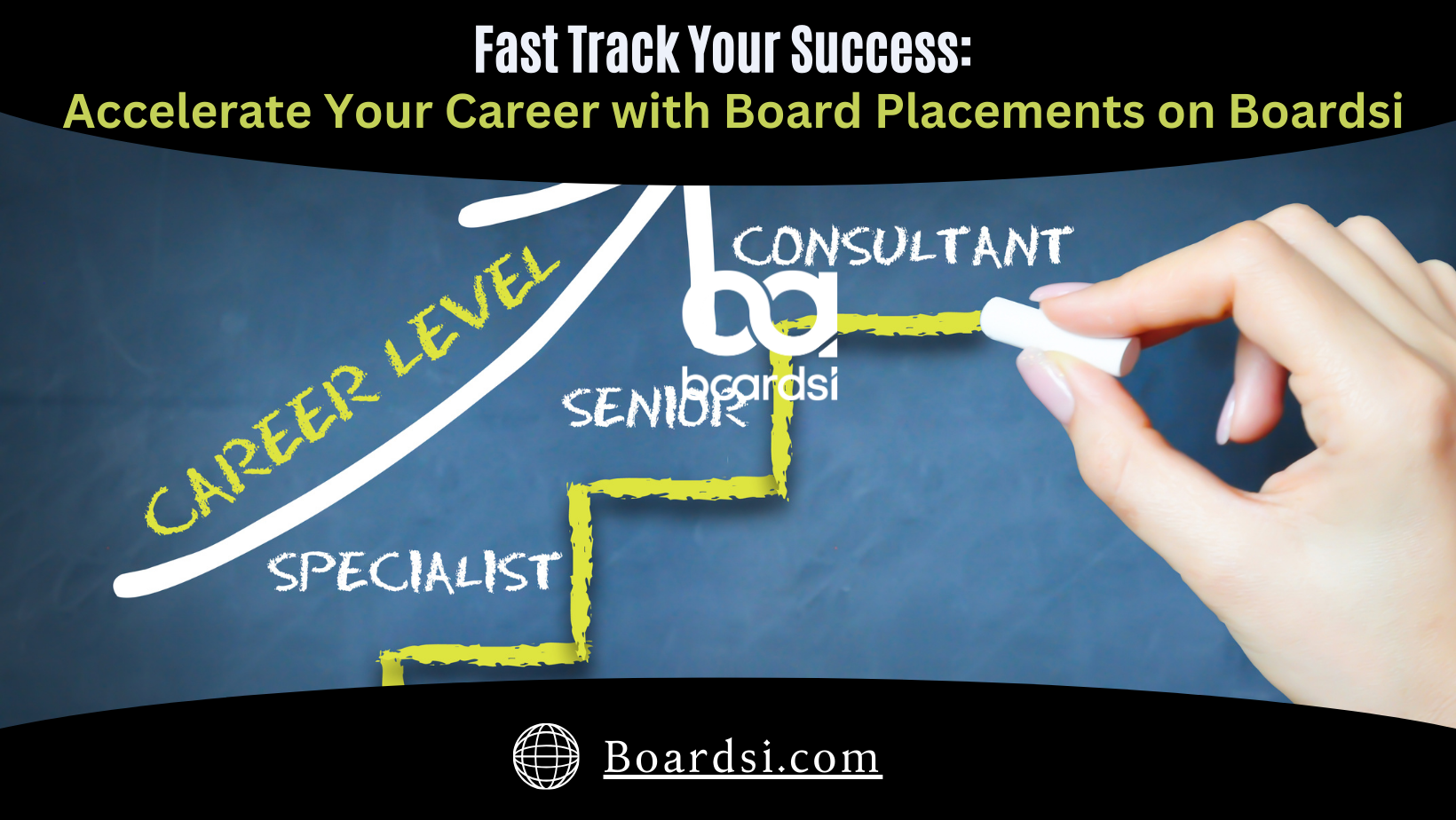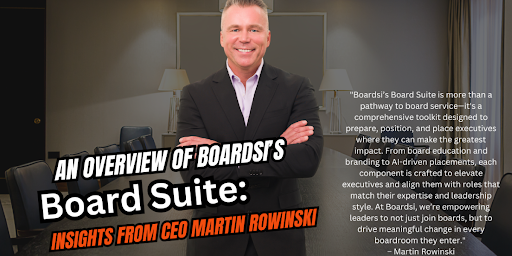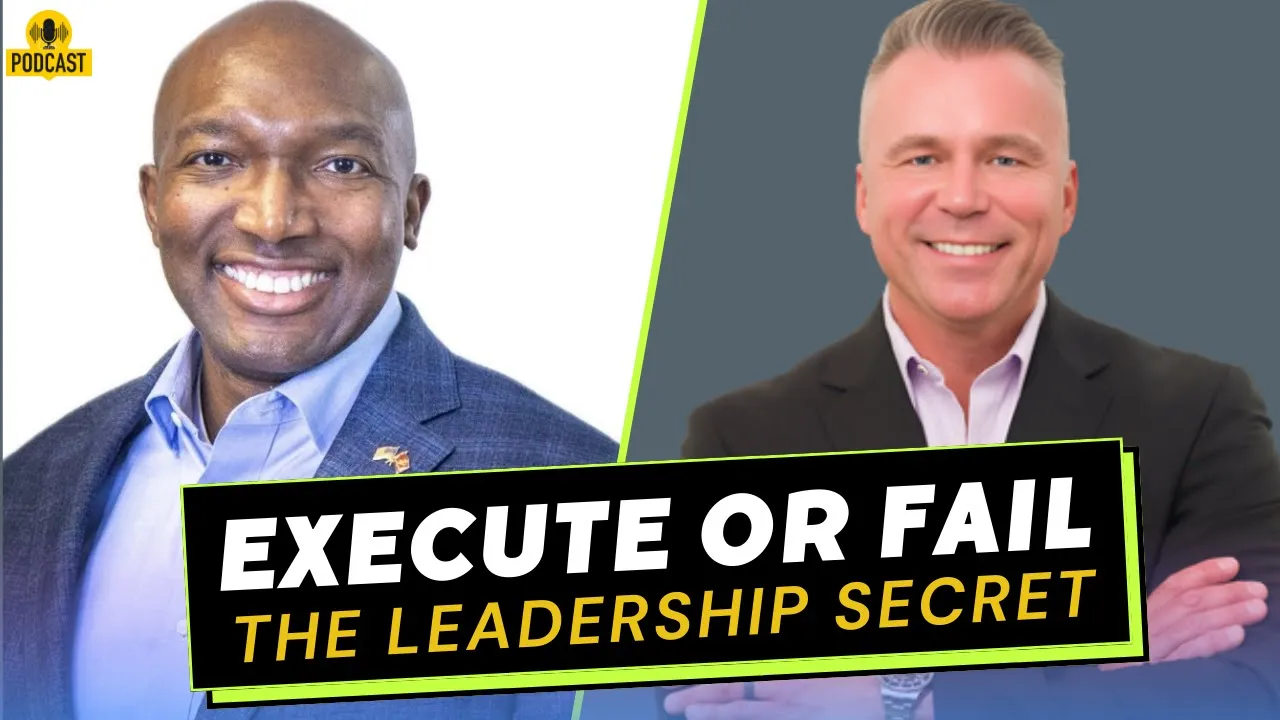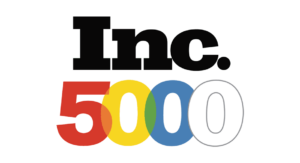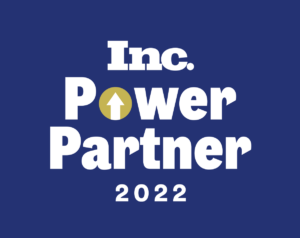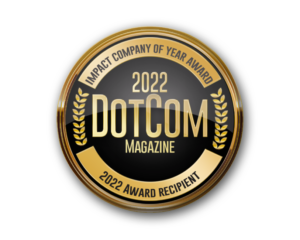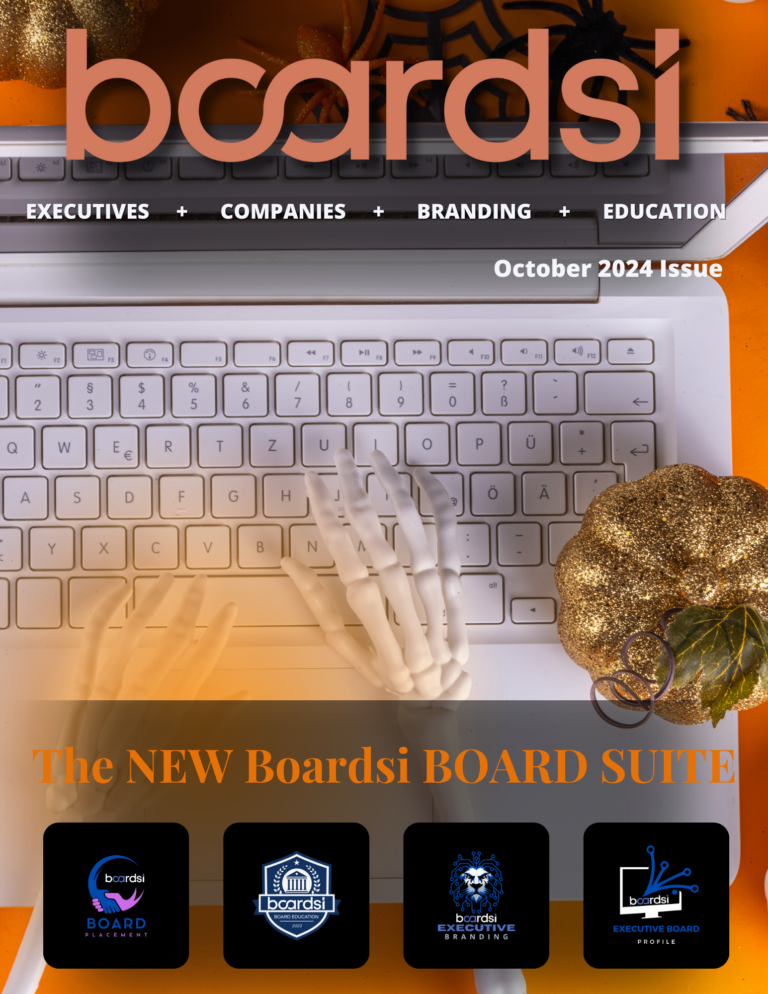In the latest episode of Leadership Talks, Martin Rowinski, CEO of Boardsi, sat down with Nick Magliocchetti, a visionary entrepreneur and founding board member of the Academy of Robotics. Known for groundbreaking projects like the driverless delivery vehicle Cargo, Nick shared invaluable insights on leadership, innovation, and overcoming challenges in the tech world.
Embracing Challenges as a Team
Nick emphasized the importance of facing challenging times as a team. He likened it to an elastic band, explaining that the more you stretch it, the more resilient it becomes. “The more you have, the more you come together, and the more challenging times become just normal times,” he said. This resilience helps teams to coalesce and grow stronger together.
The Power of Vision and Forward-Thinking
Nick highlighted the significance of always pushing forward and looking into what’s coming next rather than dwelling on past problems. “It’s about always pushing forward and looking into what’s coming next rather than the problems that have gone in the past,” he noted. This forward-thinking approach is crucial for innovation and maintaining a clear vision.
Learning from Failures
Nick shared a personal story about a venture that didn’t go as planned. He moved to a small cluster of islands to set up a fund for early-stage startups but ended up setting up an airline instead. Despite the initial success, the venture had to shut down after 18 months. “You remember most your failures because that’s the ones which hurt the most,” he reflected. This experience taught him the importance of knowing your market and the value of continuous learning.
The Role of Communication and Listening
When asked about ensuring a board remains aligned with the company’s strategic vision, Nick stressed the importance of communication and listening. “You can’t cook a meal without salt and pepper. For me, it’s the listening and the communicating,” he explained. Effective communication and active listening are fundamental to any successful leadership strategy.
Balancing Innovation and Stability
Nick also discussed the delicate balance between innovation and stability. He emphasized the need to empower employees with technology rather than replacing them. “It’s about utilizing people for the best of their ability and replacing the donkey work with technology so that they can focus on what they do best,” he said. This approach not only maintains stability but also fosters innovation.
Conclusion
Nick Magliocchetti’s journey is a testament to the power of resilience, forward-thinking, and effective communication in leadership. His insights provide valuable lessons for anyone looking to navigate the complexities of leadership and innovation in the tech world.
Stay tuned for more insights on leadership and career development from industry leaders like Nick Magliocchetti.
Martin Rowinski (00:01.368)
Welcome to another episode of Leadership Talks, where we explore the journeys and insights of today’s most inspiring leaders. I’m your host, Martin Rowinski CEO of Boardsi and today we feature Nick Magliocchetti -Ketty. Hopefully I got that right. A visionary entrepreneur and founding board member of the Academy of Robotics, known for groundbreaking projects like the driverless delivery vehicle Cargo.
With a diverse portfolio, including STOX and OX, ensure Nick has consistently pushed the boundaries of innovation in blockchain and AI. Join us as we explore his journey and insights on leading in the tech world. Welcome.
Nick M (00:47.519)
Thank for inviting me. Thanks Martin.
Martin Rowinski (00:49.14)
Did I get any of that wrong or are on the right track?
Nick M (00:53.152)
You’re on the right track. Look, it’s been an interesting journey all round.
Martin Rowinski (00:58.9)
Yes, it has. Yes, it has. So speaking of journeys and you you’re always around amazing people and you can, you know, you can name drop all you want. But how do you inspire and motivate your team during challenging times?
Nick M (01:16.345)
Well, think, firstly, I think it is all about the leadership, but I think sort of two steps back on that, think challenging times have developed, right? know, people are getting more more used to challenging times. It’s a bit like, I think about it like elastic band, you know, you can pull an elastic band and then it’s quite tight, but then the further you pull
the less of the, the further you need to pull it to make it, for it to feel tighter, right? So I think it’s actually a very good thing to have challenging times as a team. I think the more you have, the more you come together, the more you come together, the more that challenging times become just normal times. And so, and so I think it’s to answer your question, it’s about always pushing forward. It’s always about looking
forward and looking into what’s coming next rather than the problems that have gone in the past. Using everyone’s skills to best of their ability and just making sure that you have a clear vision on where it’s going. And as I said, know, challenges always come up and the more you have the better it is and the teams do cohease the best during challenging occasions.
Martin Rowinski (02:43.944)
Yeah, no, I agree. It’s like, you know, even on a clear day, the storm is coming and you know, your first storm is always the scariest.
Nick M (02:54.096)
You never remember the easy days. I think that’s the point. You always remember the tough days and you remember that’s what stands out. And I think the more of those challenging days that occur create more positive days and then both of those are remembered.
Martin Rowinski (03:14.322)
And speaking of inspiration and motivation, and I’m gonna now name drop for you, but you’re friends with one of the most motivating people that I know of, Tony.
Nick M (03:29.777)
So I need to be clear with this. So Tony’s son is a very, very close friend of mine. And Jarik, is one of his key motivational speakers, one of his main leaders, has been my personal coach for over 20 years. with that relationship comes its benefits.
And its benefits mean that, you know, Jarrett through his father’s network has access to a multitude of different networks which any entrepreneur would love to tap into. And I’ve had the fortunate occasions to speak with, interact with, closely interact.
Martin Rowinski (03:58.29)
Yep.
Nick M (04:27.012)
with Tony on a few occasions,
Martin Rowinski (04:30.514)
And he’s a he’s a giant to come along with his giant personality.
Nick M (04:34.629)
He’s a giant to come along with his giant personality. was very fortunate to be one of a handful of people who were invited to Jarrett’s wedding, actually, in Namale, which is Tony’s Island. And if talking about giants, I actually managed to sit next to him at a dinner and forget about my size in height, but my size in my hands was something quite extraordinary.
actually he is a very large gentleman. know, Jarik and I are still in touch. We sit on boards together. We actually have a board together with a few other companies which we meet regularly. And yeah, it’s a very positive relationship.
Martin Rowinski (05:24.744)
That’s awesome. It’s good to be surrounded by people like that. That’s for
Nick M (05:28.667)
Absolutely.
Martin Rowinski (05:29.94)
Can you share a specific instance where a failure led to a significant learning experience for you as a leader? And to preface that, always tell people when they ask me about failure and how I feel about it or challenges, I always feel that failure is just a stepping stone to success. That’s my motto for that. But can you share anything specific?
Nick M (05:54.704)
Look, I think, as I said before, don’t remember your, you remember your successes in part, but actually you remember most your failures, right? Because that’s the ones which hurt the most. And I have been very fortunate to have been given the opportunity to work with some amazing teams and to take on some pretty large challenges.
Some of them haven’t worked out so well. I moved to a very small cluster of islands in the English Channel around about, it’s coming up to 10 years ago now, to set up at the time a fund which was supposed to be investing in early stage startup businesses. Through a set of serendipitous events, I didn’t set up that.
I didn’t set up that fund. I was actually setting up at the time with the head of special projects for Microsoft Ventures who was a very good friend of mine. He was going to San Francisco to set up his side or to set up the deal flow. I would move to the islands and set up the infrastructure, the company, the transactional aspects of it and the KYC and AMO aspect of this whole thing. Anyway, that didn’t happen.
As I said, was set to serendipitous events. I set up an airline instead, which was quite, quite strange. I found myself in a position where I saw an opportunity, I saw a gap, and I saw a very huge market demand, which I acted upon slightly impulsively because I didn’t know the area, I didn’t know the landscape, I didn’t really know many people.
And it was successful. We got to market in nine and a half months when normally launching an aviation project would take about 18 to 24. Truth is I only was able to do that having an incredible team around me, led by the chief pilot, our safety officers, et cetera, et cetera, who just were just incredible people. And for them firstly to even trust me on that journey was insane.
Martin Rowinski (08:00.596)
Amazing.
Nick M (08:21.972)
But we did it and we got to market. We took a very large percentage of the market share very quickly and we did that by listening to people. We listened to our customers or we listened to the potential customers and we built what they wanted and they lapped it up and they took it and we sold. As I said, I didn’t really know the landscape that well at the time so perhaps I could
stepped on a couple of toes that I might not have had to. And the market share that I took was from individuals who perhaps had bigger and deeper pockets than me and bigger shoes and more reputation on the island. So they put it to bed and very quickly I understood that. And we ended up having to shut down about 18 months later, which was a huge disappointment because it was such a great business, such a win.
for everybody. learnings, know your market. being an entrepreneur, being a big thinker is amazing. You know, going for swinging the bat to the, to the beaches is, the biggest thing that any entrepreneur can do. And, know, I find it incredible standing here at 40, 46 and to be able to say that I own an airline before my 40th birthday. But you see at the same time in the same, in the same breath, I can say,
you know, if I was to do it differently, would have, you know, I would have thought, thought through a couple of other steps, but the learnings from this are just continue to learn. Don’t be afraid. And in the end, the truth is, you know, the teams, everybody, your wife, your kids, everybody in the end of the day, it’s the decision comes down to you, right? As that key person. And I’ve worked
not hundreds, over 50 different entrepreneurs in the growth and in the setting up and the exiting of their companies. And as a co -director, as a non -exec director, as a co -founder, you can be as supportive as you possibly can. But in the end, it always does come down to that, the number one guy, right? Who is the director? Who’s the guy behind it?
Nick M (10:48.756)
And I think that’s the biggest learning is, you know, believe in yourself.
Martin Rowinski (10:53.534)
Yeah, absolutely. And since you brought up board and board work, I know you’ve done plenty of it. And I’m sure always looking for more. Well, actually, I know you are. How do you ensure that a board remains aligned with the company’s strategic vision while also providing effective oversight?
Nick M (11:14.422)
Listening, communication. think it’s literally, I think it’s like, you can’t cook a meal without salt and pepper, That for me is the salt and pepper, it’s the listening and the communicating, right? And I think without that, nothing exists. And if one isn’t listening, you ain’t gonna get there. If you’re not communicating, you ain’t gonna get there. And I don’t think you can get anywhere without starting those two fundamentals.
Martin Rowinski (11:45.532)
Yeah, I agree. And I always say there’s a reason we have two years in one mouth. Listen more.
Nick M (11:51.168)
Yeah, exactly. Completely right. Completely right. I I spent a while in turnaround and buying or facilitating the restructuring of companies that were going under. And many times the founders or the directors or the board, they were there and they couldn’t understand why they were in this situation.
and I would sit there and I’d ask them to explain to me why they’re in this situation and they answered a different question because they couldn’t even answer the question that I was asking because they weren’t listening and if you ask them who’s the highest paid person one of the fundamentals when you are trying to fix a company that’s going under is I call it following the money so you follow the money who’s the one spending the most? who’s the one earning the most?
who what is the biggest overhead and what is the least the smallest overhead normally the problem lies in one of those four things and you if you find that sales guy who’s getting paid five x which he should be and you ask why one of those is well well you know he’s been selling for 10 years right but he’s not now do you know what i mean it’s it’s you know or or you know or you you look on the balance sheet or you look on the pnl
There’s a huge line there, which is your rent is four times what it should be. And they go, well, we’ve had clients for seven years, but you don’t have them now. The fundamentals of operating are, and this is back to the communicating this and that, everything is quite, it goes down to the fundamentals. And sometimes people think that this is, have to read a book or go into grassroots AI
to tap into where the issues are, but actually it’s very surface and it’s just asking simple questions. And going back to Tony and Jarik, think that’s one of the biggest things I would take away from Jarik, and I believe that’s mainly from his dad’s teachings, is actually just asking the right questions. And when you’re with a board, when you’re with other directors, if you ask the right questions, the answer is,
Nick M (14:12.082)
If they are forthcoming with an honest answer, you will always get to the
Martin Rowinski (14:17.562)
if they have the right
Nick M (14:20.48)
they have the honest answer because if it’s it’s if the honest answer is the wrong answer then you know what you need to do if the honest answer is the right answer then you know what to do you know it’s it’s it’s just about it’s about asking and and it’s then about you as the coach as the board member as the board director to ask the right questions
Martin Rowinski (14:22.12)
Well, that
Martin Rowinski (14:40.84)
Which brings up the point of transparency and integrity, right?
Nick M (14:46.36)
And I transparency and telepathy works both ways. There are, I need to say this carefully, there are lots of senior board professionals who I’ve experienced who are board professionals, who have 25 tickets on their sheet. They do eight calls a week.
You know, they get paid by 15 different companies in a monthly basis, you know, and, literally they’re just professional board person, which is amazingly inspiring if you can deliver value to each of them. But the integrity comes from actually where are you actually delivering that value? How are you aligned? Do you understand it? If you don’t understand it, it doesn’t actually matter, but how are you actually adding that value? Right? Is this a joint, is this a voyage of discovery just for you
Is it an ego play? Is it just a money play? What is it? And yeah, so that’s just another thing
Martin Rowinski (15:51.442)
Yeah, that is very important. How do you balance the need for innovation with the need to maintain stability in an organization?
Nick M (16:03.0)
versus stability. Okay, I think you need to first sort of define is this financial stability? Is this co -working and sort of, you know, morale stability? Is this communication stability? You know, whatever it is because today in today’s world, right, you know, we could remove 90 % of the workforce, deliver AI,
and the result occurs. Does that offer stability? Does that offer the genuine output? Can you actually remove people to deliver the solutions that are required? And so I think it’s a fine line. And I think it depends what it is. I’ll give you an example. We built some software a while ago, which was for KYC and
So know your client and anti money laundering information collection. you know, collecting, if you want to open a bank account, have to give your your, you you have to give where you where you reside, have to give your passport details, you need to show your bank, your previous bank sense, your income, your expenses, this, that, whatever. Now, one of the challenges, and this is just I’m giving you an example here. One of the one of the challenges is if then you go to another bank,
or if you go to your lawyer, he then asks for the same information again, right? And then you go to the accountant, he asks for the same information again. Now, that for me is where technology comes into play, right? Where it’s misaligned, where actually what you should be doing is giving this information once, and that information should then be able to be carried on to third parties, right? But where information and where the workforce comes in the example is
Where there is a process that is a process which can be streamlined and can be automated, okay, it is not to bring that technology to a company, remove the person who’s got that job and replace them with an AI agent. The trick is to actually empower them to use the AI.
Nick M (18:28.485)
so that they have more time to work on the good stuff and not the stuff that weighs them down and is the mind numbing stuff that isn’t actually utilising their skill set. And so that would be my best answer. So it’s utilising people for the best of their ability and to replace not them with technology, but to replace the donkey work with technology so that they can focus on what they do best.
Martin Rowinski (18:58.554)
I love it. love it. I said something very similar not long ago. It’s amplifying the employees to their best abilities. And that’s why instead of being negative about AI, since we’re talking about AI, they should be they should everybody should look at it as what can I do for me to improve my job, make it easier on me so I can focus on the big stuff. You can’t replace a human.
Nick M (19:22.842)
you soon.
Nick M (19:27.492)
For sure, for sure. I was watching CNBC the other night and there was a teacher, there was a set of teachers and it was a very fascinating panel. One of them was saying how AI was the devil, right? And every student in American universities now using it to write all their papers and everyone’s gonna get dumb and all this. And the other lady was saying, you should be embracing AI. And actually she had, she
Martin Rowinski (19:54.256)
Embrace
Nick M (19:56.86)
the trick and the trick was rather than telling them they can’t use it, we should be teaching them to use it correctly so that it amplifies what they can do. So now actually makes them a better human, a better thinker, right? Because if you take it away from them, you are removing the encyclopedia Britannica, which we used to look up, right? We used to have Google, right? And living without Google for us would have been impossible or the encyclopedia Britannica would be impossible.
Martin Rowinski (20:18.76)
Yep.
Nick M (20:26.619)
But we’ve embraced it, we use it, we use it every day. So this is where the future students and universities should be embracing it. I don’t think 20 years ago, or whatever it was, 40 years ago, kids were allowed to walk into universities with a calculator or electronic calculator. had to bring in paper, but today they do, right? And it’s the same shift.
Martin Rowinski (20:48.34)
Yeah, yeah, we keep getting better in tech. Now it’s probably not even calculators, it’s just a cell phone, right? It comes with a calculator. Yeah, 100%.
Nick M (20:54.661)
completely this is this is what I’m saying you know I’m using the example of how it used to be when people never brought calculators and then everyone was up in arms that you could bring a calculator into an exam Jesus now you know as you say now you’ve your phone you’ve got a Google you’re everything yeah answer your question
Martin Rowinski (21:11.06)
Yeah, no. I know I agree 100%. So I got a couple fun questions that I love asking towards the end of the recording. So quick one quick fire one coffee or tea? I’m guessing one of
Nick M (21:27.483)
Double expressa. Double
Martin Rowinski (21:30.608)
double. Okay. Are you an ice cream guy? Do you do affogatos?
Nick M (21:36.869)
I don’t do ice cream. don’t do sweet stuff. I would choose cheese at end of a meal rather than
Martin Rowinski (21:45.374)
So just straight up double espresso. Love it. My favorite, by the way, in Italy, I can’t wait to get it. especially right off the freeways. What do they call them? Autobahn? Auto something?
Nick M (21:47.974)
Double espresso. No. No.
Exactly. Yeah, outer grill, auto grill. Yeah, exactly. Yeah, completely.
Martin Rowinski (22:01.266)
Yeah, that’s it. love it. Love it. Since you do quite a bit of traveling, you’re living on an island right now. What is your favorite place if you could get on a plane right now? If you still had your airline, could. If you get on your plane right now, where would you
Nick M (22:19.601)
Yeah. Well, it would be one of two places. It would be the Italian Alps into a small ski resort into Cormier, which is where myself and my wife recently got married. it’s a little thank you very much. It’s a little haven for us up there. The second one is an island called Formantera, which is a little island in the Banyarex, which is holds also some very fond
Martin Rowinski (22:33.746)
congratulations.
Nick M (22:48.964)
memories for us there as well. I prefer the smaller places where you get to know everybody rather than the big metropolitan cities. yeah, a very close third would be New York City. And that’s because I went to university there. Well, I did part of my university there and I had lots of very fun experiences during my
Martin Rowinski (23:10.724)
Awesome. If you could have dinner with anybody, could be somebody from the past, could be somebody right now, famous or not famous, anybody that you could have dinner with and have a great conversation with, who would that person be?
Nick M (23:28.165)
Look, this is going to be a little bit obvious. It’s, it’s, and I’m almost embarrassed to say it because I’m a bit of a fanboy and it would be a lot of muscle, right? I mean, I’ve, circles have crossed numerous times, but we’ve never met. And by that, mean, close friends are friends, close friends are friends, but just never, never met. And, and I really, I value
to be in the same room as him.
Martin Rowinski (24:00.464)
Okay, if you do ever get invited, can you please call
Nick M (24:03.909)
I will do it and the thing is mutual right so the same same exactly the same thing the other way around right if you get him on a podcast then just tell me where you are and I’ll sit outside
Martin Rowinski (24:05.458)
I’ll crash the party.
Martin Rowinski (24:12.276)
You got it. got it. Nick, thank you so much for your time. This was awesome. Looking forward to staying in touch with you and keeping in contact. So thank you very much.
Nick M (24:21.374)
Thanks, Martin. Thanks for giving me the opportunity. Thanks very much


